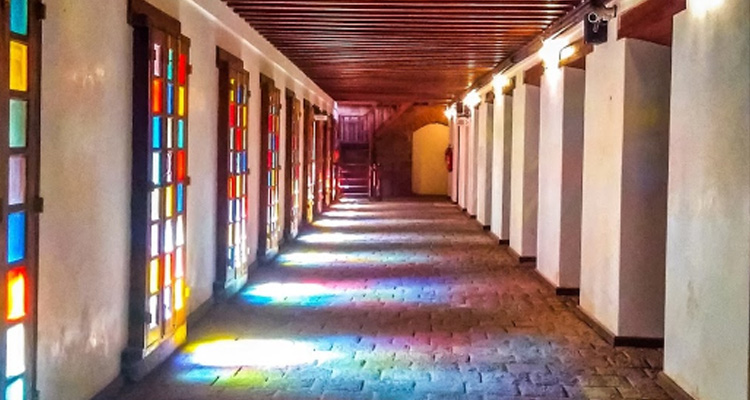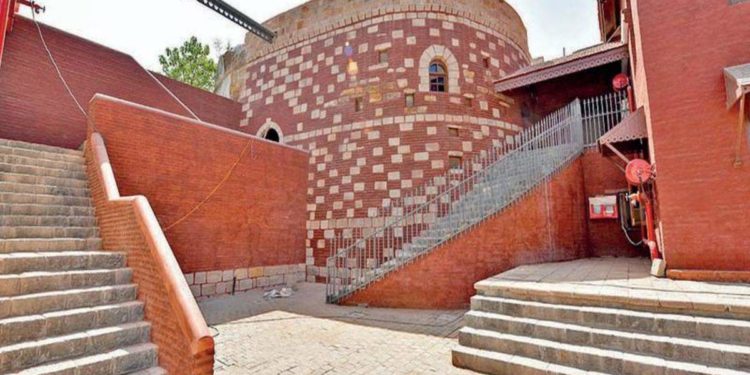Surat is a major city in the west Indian state of Gujarat, located along the Tapi River. Surat, formerly noted for silk weaving, is still a textile commercial center, and the New Textile Market area is lined with fabric businesses. This city houses one of the most significant castles in the history of India, the Surat Castle. Surat Castle, which overlooks the river, was erected in the 1500s to defend the city against Portuguese colonists. Nearby, ornate colonial-era graves may be seen in the Dutch, Armenian, and English cemeteries.
About Surat Castle
The Surat castle is one of the city’s older 16th-century landmarks, and it has great historical significance. This, which provides the residents of Surat with the appropriate defense against invading invasions, appears to have been forgotten in the thoughts of the current generation. The Ahmedabad king Sultan Mahmood-III (1538-1554), who was irritated by the repeated destructions of Surat, ordered the construction of an extremely powerful fortress and gave the job to Safi Agha, a Turkish soldier who had been given the title of Khudawand Khan. The castle’s construction was finished in 1546.
Following the surrender of Surat by Emperor Akbar (1573), the citadel was under the supervision of commandants chosen from Delhi until it was taken by the Sidhi admiral of the Mugal navy in 1751. The Sidhi did not control the fortress for long, since it was seized by the English along with the rest of the city in 1759. Despite being essentially autonomous from the start, the English controlled the fortress technically under the Mugal.
Two flags flew from the castle walls as a symbol of this split command: the English ensign on the south-west bastion and the Moorish standard on the south-east bastion. This practice was continued until 1842, when, upon the death of the last of Surat’s nawabs, the English fleet was evacuated from the Tapi and the Moorish banner was removed from the castle walls.

Surat was allegedly burned down by the Portuguese in 1512. Surat was supposedly subjected to a completely unprovoked and piratical attack in 1530, this time by the Portuguese led by Antonio do Silveria. Surat was burned down again the next year, 1531, by the Portuguese. The Ahmedabad king Sultan Mahmood-III (1538-1554), who was irritated by the recurrent destructions of Surat, ordered the construction of an extremely powerful fortress and gave the job to Safi Agha, a Turkish soldier who had been given the title of Khudawand Khan. He was given a large budget and told to plan and construct an extremely sturdy fortress.
Khudawand Khan initially considered three different locations for the castle’s construction. The river’s bank was chosen and finalized by the king. It has been reported that the Portuguese made several attempts during the construction stage to prevent Khudawand Khan from completing the work, both through bribery and force, failing which they came to attack with several vessels armed with cannons, but were unable to prevent him from building the castle. In 1546, he finished the construction of this castle.
It is an irregular square in plan, built on a one-acre block of ground, with a short wing facing west and one of the oblique wings facing north-west. There is a massive circular tower around 12.2m in height at each corner, with the wall curtains reaching nearly as high as the towers and the wall thickness being 4.1 m. The tops of the bastions are done in the Portuguese style. After all, attempts to stop the building failed, they tried to persuade Khudawand Khan to abandon the Portuguese-style bastions, but it was Khudawand Khan’s unwavering determination that led to the completion of the entire work exactly as planned.
According to reports, Khudawand made proper defense plans for placing the guns he brought from Junagadh in order to repel the Portuguese onslaught. Because the king desired an extremely strong castle, all of the masonry’s component parts were bonded or secured together with iron strips, and the joints were filled in by pouring the molten lead.
Similarly, the highest level of security from a defense standpoint is prominently included in the building of its entry gate. This spectacular entrance on the castle’s eastern wing is meant to give a large structure with robust door shutters supplied with projecting spikes on the outer face and a beautiful architectural treatment on the inside façade.
There were two entrance gates in the structure, one facing the East and opening on to the Chowk Bazar side, and another of comparatively smaller size facing the West – towards the riverside and serving as a gateway from the harbor and as a facility for the direct entry of goods and other items from ships. Another distinguishing feature at the main entrance gate was a ‘draw-bridge’ spanning the moat. Many European and other travelers were said to have spotted this drawbridge till the end of the 17th century.
Surprisingly, none of these characteristics are now detectable. The entry gate facing the river, as well as the curtain, are no longer present, and the moat has also been filled with soil. As far as can be determined, the sole alteration to the castle since Khudawand Khan’s construction occurred in 1760, when the English created work and gateway on the outer bank of the moat on the eastern side, opposite the entrance.
All these features make Surat Castle one of the most visited tourist sites in Surat. It not only attracts tourists from different parts of the country but also from the world.






















